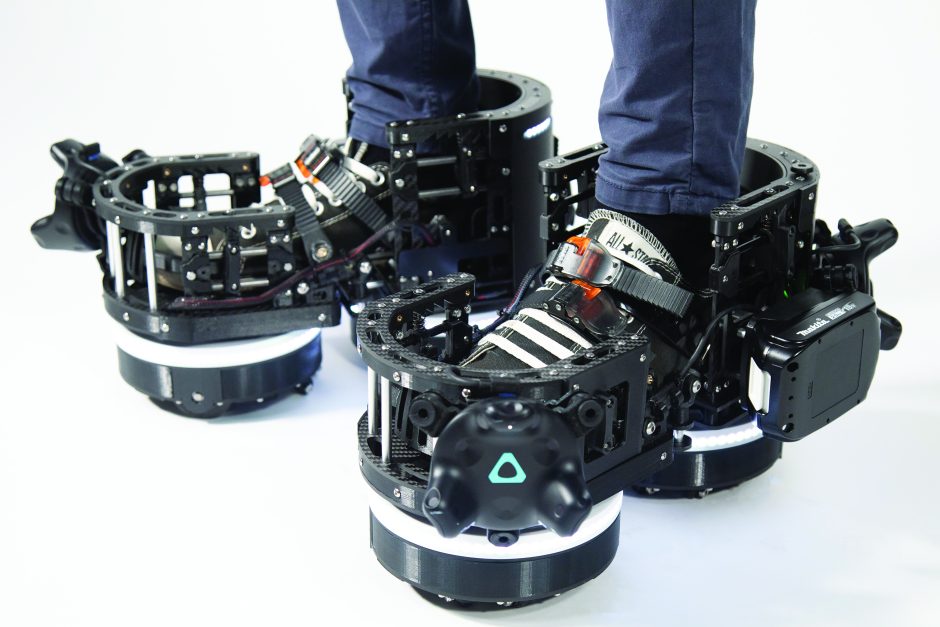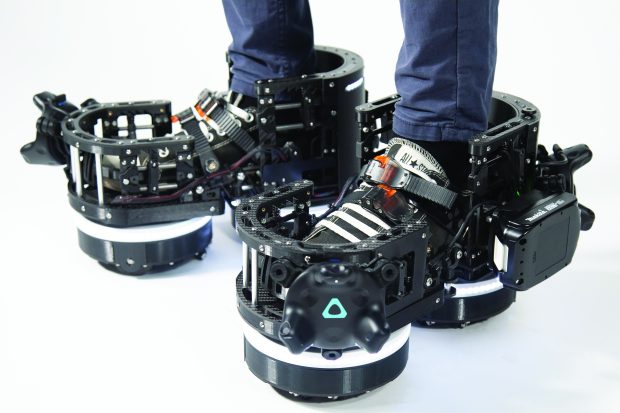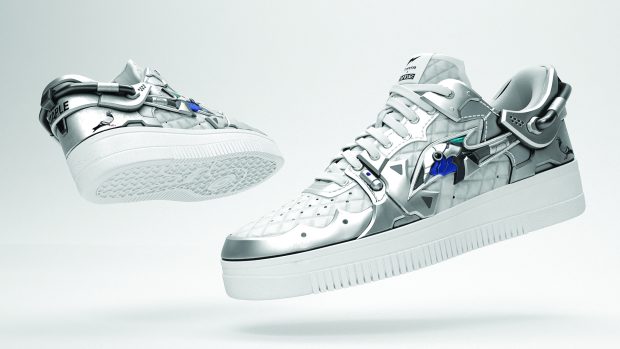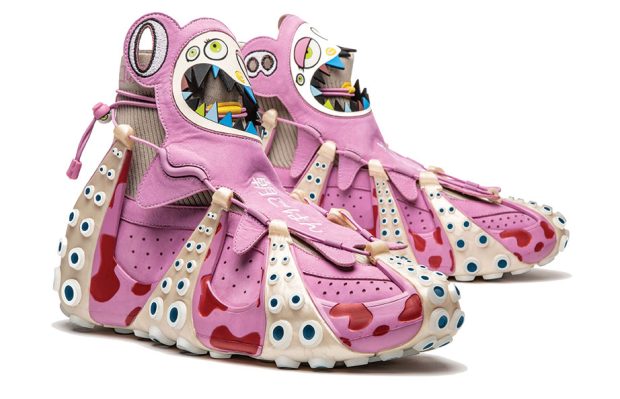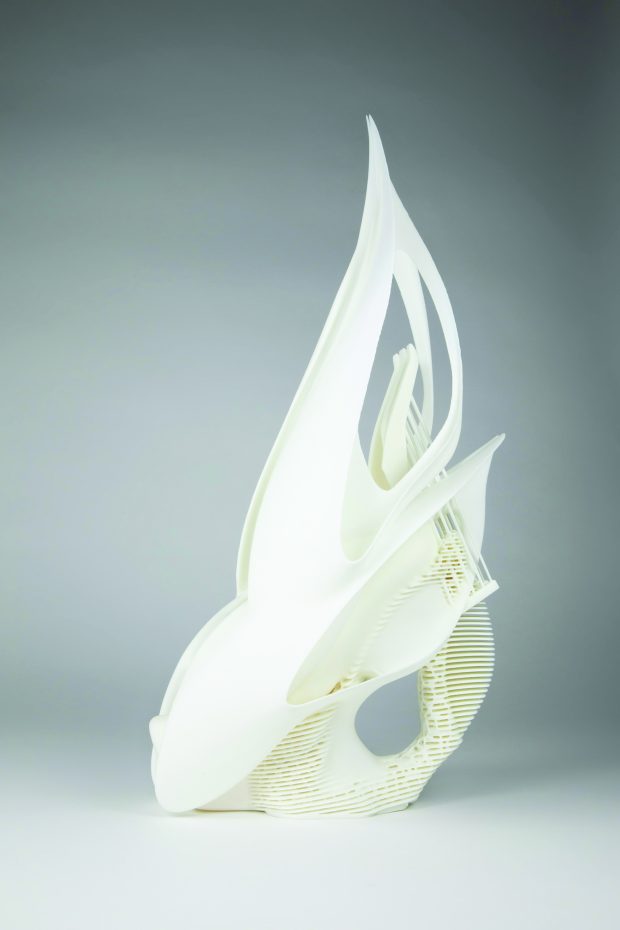The Bata Shoe museum exhibit, “Future Now: Virtual Sneakers to Cutting-Edge Kicks,” is going on the road, and the first stop is the heart of American sneaker innovation in Portland, OR. The collection of nearly 60 designs first debuted in Bata’s home base of Toronto, Canada, in May of 2022.
The exhibit pushes the boundaries of what footwear can be, spanning a mix of fashion, gaming, new media, architecture, and material arts as well as sustainable and collaborative practices. It includes works by Rem D. Koolhaas and Zaha Hadid, innovators Mr. Bailey and Salehe Bembury, designers Rick Owens, Stella McCartney, and Yohji Yamamoto, and top gaming companies like PlayStation and EA Sports. Highlights include the Nike Mag, conceived for Back to the Future Part II by Tinker Hatfield, MSCHF’s Big Red Boots, and EKTO’s One VR robotic boots.
“Each of the sneakers were chosen not only for what they’re doing today, but how their design might change what we wear in the future,” says Elizabeth Semmelhack, director and senior curator of the Bata Shoe Museum, adding that sneakers are a focus of innovation because of the requirements of elite athletes that have long driven designers to experiment with new ideas and materials. “Today the popularity of sneakers is driving innovation to meet broader concerns, such as more sustainable manufacturing processes and materials. The cultural importance of sneakers also inspires creatives to push the envelope of design. It has even brought them into the metaverse.”
Future Now features sections on innovation, sustainability, transformative design, and virtual shoes. It includes digitally designed and 3-D printed shoes made from renewable materials and reclaimed ocean plastics. Semmelhack says 3-D footwear, in particular, presents several sustainable design attributes. “First, 3-D printing produces less waste as it’s an additive rather than subtractive process, meaning that shoe components aren’t being cut out of material leaving cutoffs behind,” she explains. “3-D printing also offers the possibility of made-to-order production, reducing the potential for wasteful over production.” Semmelhack adds that another important part of the exhibit’s sustainability story is the use of eco-friendly materials like the featured Nat-2 sneakers made of mushroom leather. “Julian Zach’s conceptual piece imagines us growing our own shoes using mycelium, the root structure of fungus, at home,” she adds.
Unique to this presentation of the exhibit is a collaboration with Doernbecher Freestyle, celebrating its 20th year of partnership between OHSU Doernbecher Children’s Hospital and Nike. This partnership pairs Doernbecher patient-designers with Nike designers to create footwear that brings each patient’s vision and story to life—with 100 percent of the sales profits donated to the children’s hospital.
“This exhibition expands the possibilities of what footwear design can be, presenting the future right at our feet,” says Amy Dotson, curator of Film & New Media for the Portland Art Museum. “The show is a love letter to all of the artists, storytellers, designers, and visionaries who dare to think differently—many who live and work right here in Portland, the shoe capital of the United States.”
As for a personal exhibit favorites, Semmelhack cites the Goodyear sneaker from the 1890s because it’s a “perfect example” of what the exhibition is trying to explore. “I love that it looks so humble, but in the 1890s rubber was a cutting-edge material, and in this seemingly unremarkable sneaker are the seeds of future sneaker culture,” she says. Another fave: Steven Smith’s Instapump Fury, released by Reebok in 1994. “It was such remarkable exercise in stripping away everything that isn’t necessary to achieve a lightweight, performance running shoe,” she says, adding that it’s still seen as a radical design 30 years later. Last but not all, Semmelhack cites the auto-lacing 2015 Nike MAG, a visionary movie prop that could only be made into reality decades later; the “marvel” that is Mr. Bailey’s Octopus shoe; and Scry’s digitally-designed and 3-D printed shoe that points to new directions for sneaker design. “(The latter) is fully wearable and opens our eyes to what could be brought to scale, if we dare,” she says, adding that, “I have a deep appreciation for each of the shoes on display.”
On that note, Semmelhack hopes visitors leave the exhibit (runs through Aug. 11, 2024) with a greater appreciation of the creativity and innovation taking place in the footwear space, as well as realizing that the future is already right at their feet. “I couldn’t imagine a better place than Portland for this exhibit, a city where so much innovation in sneaker design happens,” she says.

